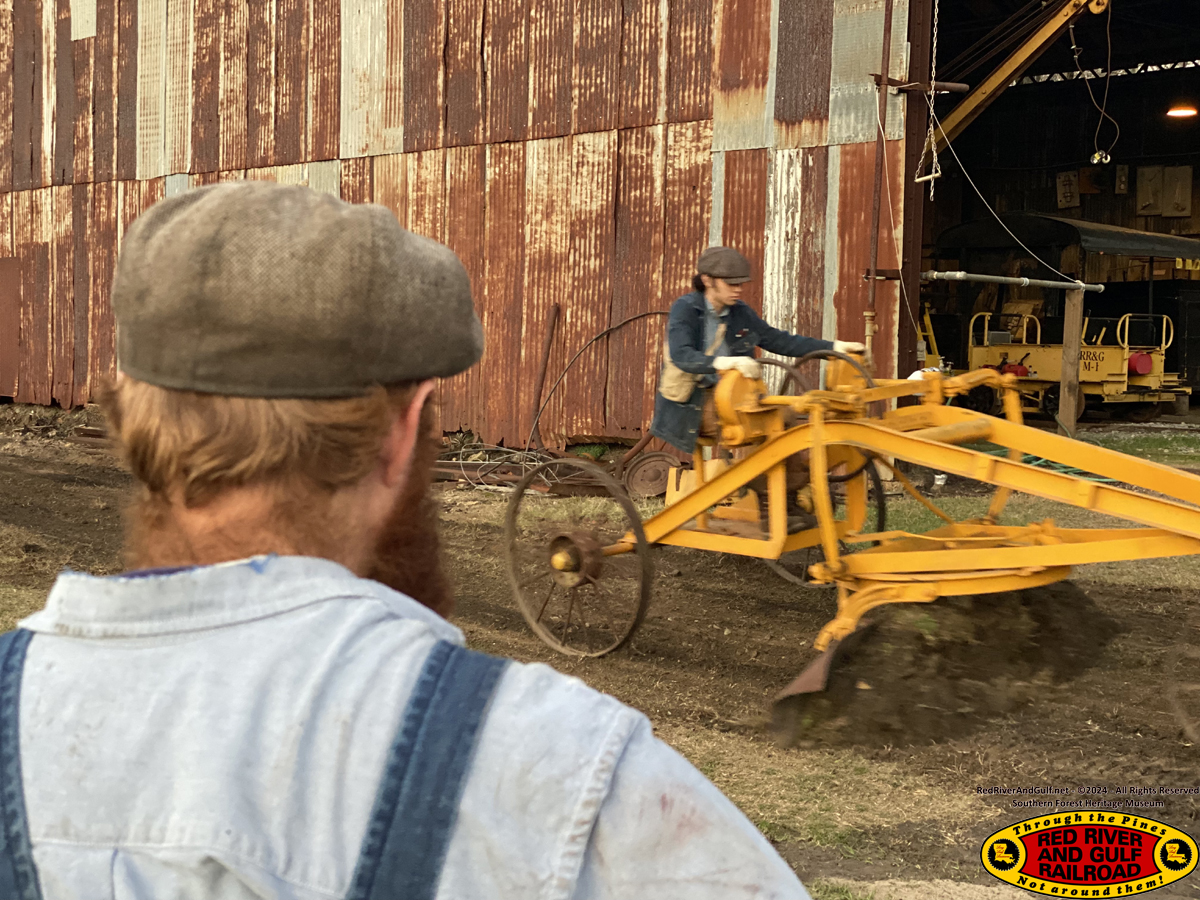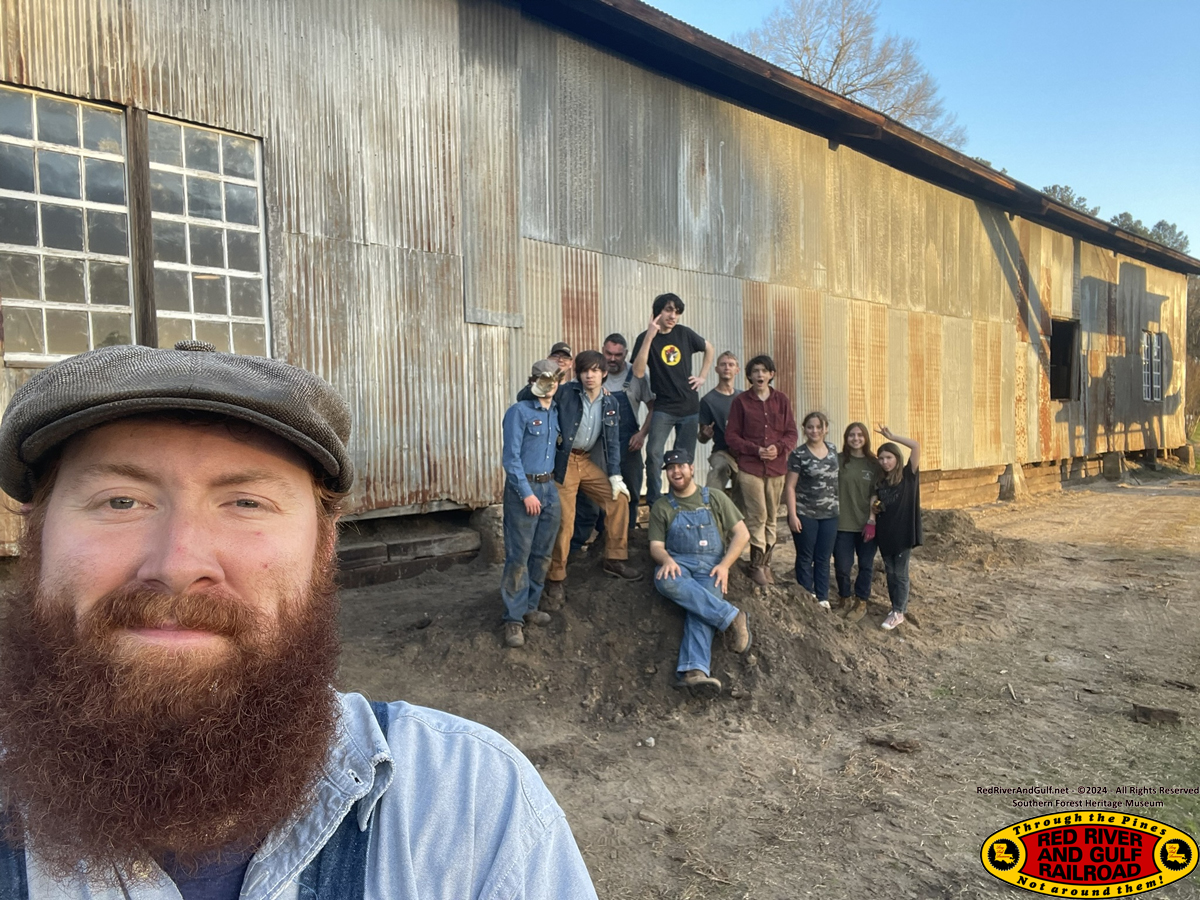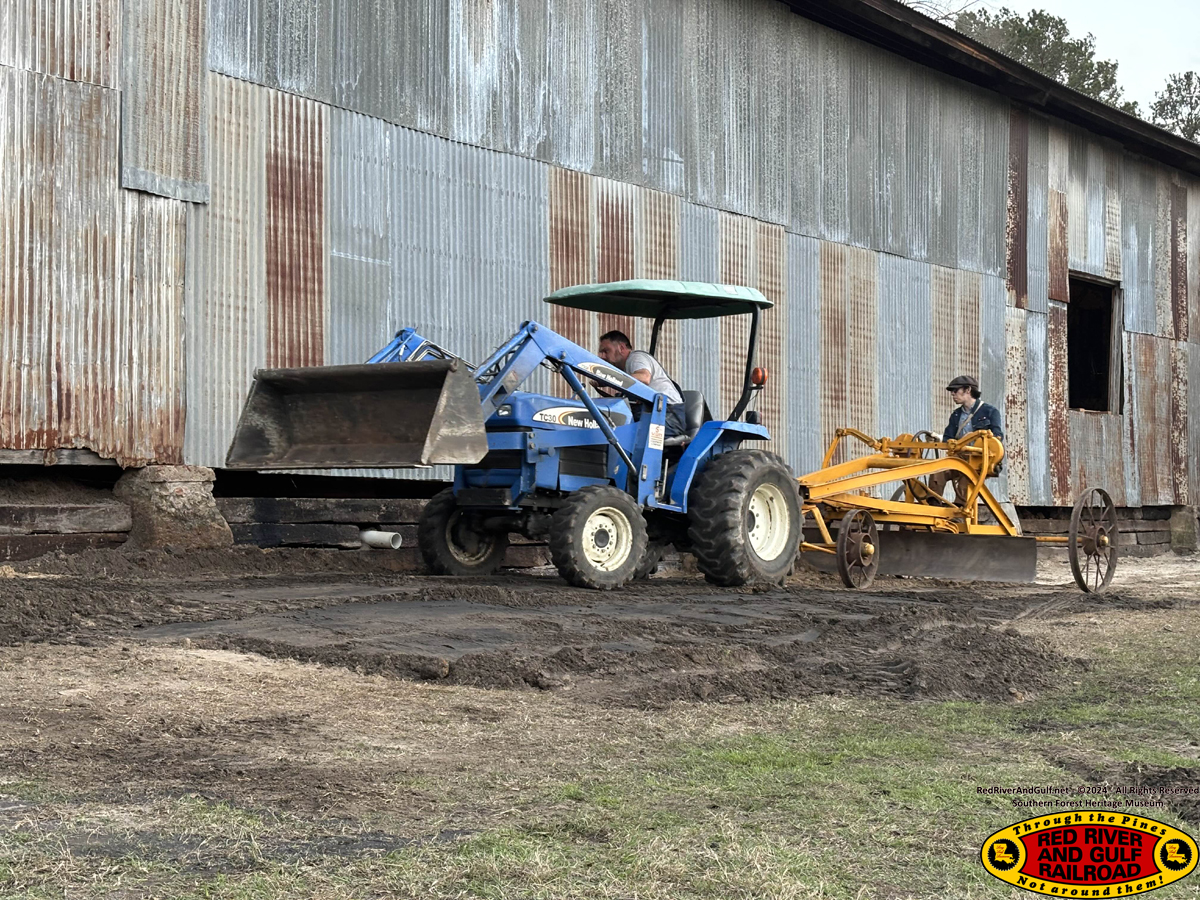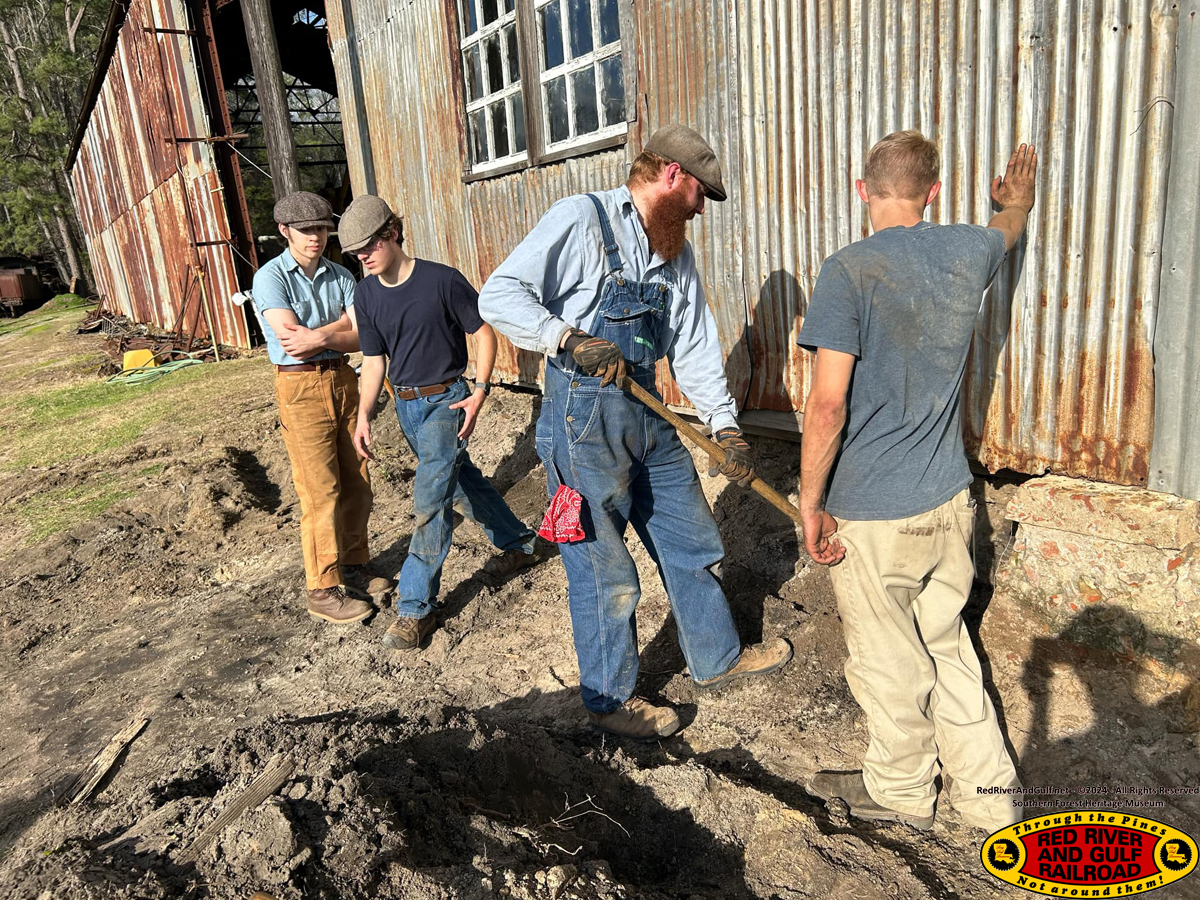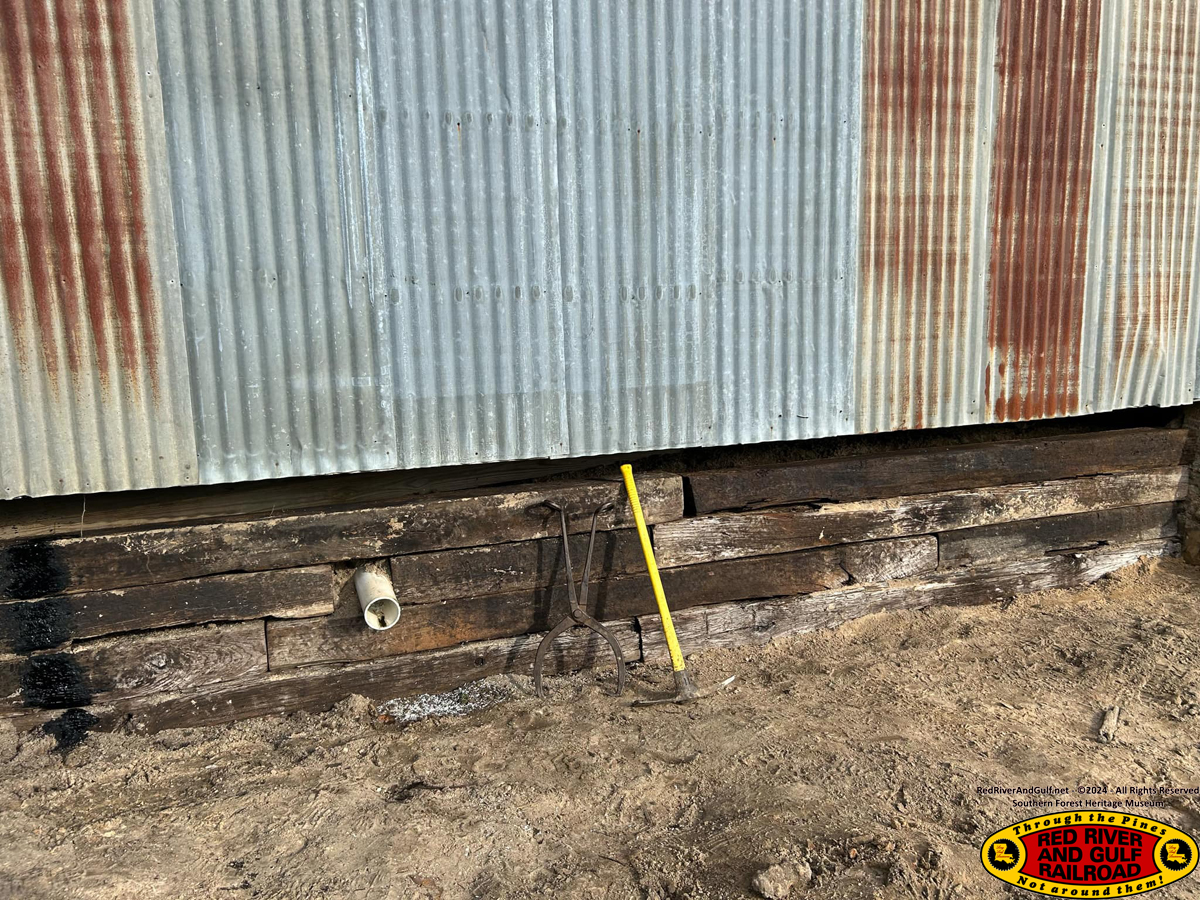|
Volunteers
1. Joseph S.
2. Joseph S. Jr
3. Tucker B.
4. Glen A.
5. Mike M.
6. Clint L. Jr
7. Michael P.
8. Wimbley V.
9. Tabitha D.
10. Abby D.
11. Ayden S.
12. Gaven R.
13. Nick P.
Accomplishments
1. Successful public train rides for visitors for LSU Ag Center Seed
Swap event
2. Completed installation of erosion control timbers on machine shop
west wall floor
3. Graded and smoothed out various roadways
Thank you to all the volunteers that came and worked on a great weather
weekend with continued progress at the museum. Your time and talent is
greatly appreciated.
Friday
The M4 encountered a few issues since the last session where the
radiator fan and air compressor were not working. Mike Miller traced the
electrical wiring and found a burned fuse holder being the issue on the
radiator fan. Replacing the fuse holder fixed the radiator fan. Friday
evening, Joseph and Tucker found a broken in-line fuse (located
underneath the floor) to be the issue for the air compressor. Replacing
the fuse fixed the air compressor.
Dewayne, assisted by Gaven and Joseph Jr, finished the requested welding
work on the Heisler smokebox. Steady progress continues on the Heisler
restoration.
Saturday
The volunteers met in the lodge kitchen for the briefing. The first crew
of Wimbley, Michael, Clint, Nick, and Tucker headed up to the engine
house to prep and hostle M4 for the day’s public Seed Swap event. The
radiator fan and air compressor all worked as normal. Tucker topped off
the radiator with additional coolant, and with the gas Michael and
Wimbley put in the weekend prior, the M4 was ready to go for the day.
Tucker, Wimbley, and Joseph alternated operating the M4 on a beautiful
Louisiana sunshine day with Nick and Michael alternating as conductor.
Rides boarded and deboarded at the planer mill where the seed swap was
located.
The second crew of Joseph and Ayden set to work on the all-terrain
forklift after finding a rear tie very low on air. Running out
electrical cord, and using his air pump, Joseph was able to air the tire
back up and secure the tire firmly to the rim with a chemical aid. He
then used the forklift to bring over the additional erosion control
timbers/ties to finish the machine shop west wall dirt floor project.
The third crew of Dewayne and Gaven, later aided by Ayden, Tabitha, and
Abby, removed the existing old, junky ties that had been in place to
provide at least some haphazard erosion control on the machine shop west
wall. This was done to begin clearing the work area for the afternoon
project.
Glen worked with the new Kubota tractor, installing a missing grease
fitting, and greasing the front bucket fittings. He operated the tractor
some, picking up limbs and other debris, to work in the grease. He also
reviewed the tractor’s operation with Joseph, getting Joseph reviewed
and approved for its operation.
In the afternoon, the Seed Swap had completed by about 1400. The whole
crew of Joseph, Gaven, Nick, Clint, Michael, Wimbley, Dewayne, Tucker,
Tabitha, Abby, and Ayden turned to the machine shop. They finished
installing landscape timbers/ties as erosion control on the west wall of
the machine shop dirt floor. Shovels and picks were used to dig a smooth
face against the floor, the first layer of ties were inserted, then dirt
packed in behind the first tie layer. The process continued in a
brick-laying fashion until the final two sections of floor (a “section”
being between two concrete piers) were completed. Joseph used the
tractor to clean up all the various scattered metal along the machine
shop wall and engine house wall. All volunteers pitched in and this old,
often scrap metal was placed adjacent to the large scrap pile opposite
Locomotive #400 and the Clyde Skidder. Thus the scattered rusted metal
was grouped with the piled rusted metal. A follow-up will also be to
install 2x4 and 2x6 cross bracing on the erosion control walls to hold
the stacked ties in place.
In the evening, Joseph and Wimbley used the museum tractor and the
restored 1930s Husky road grader to grade and smooth the road between
the machine shop and McGiffert log loader #1230. The rig did so well
grading, they even graded several other roadways at the museum,
including alongside the engine house. Later in the evening, Joseph used
the roller/packer to pull behind the tractor to pack-in the freshly
graded road.
Sunday
Early Sunday morning, Joseph was working with the tractor to smooth and
clean up areas around the engine house and machine shop after the prior
day’s grading. Joseph and Tucker then continued the metal parts clean up
around the engine house and machine shop west walls. Numerous pieces of
metal, many often indiscriminate and not identifiable, continued to be
found left and right in the dirt. After that, they greased the Husky
grader, hooked it up to the tractor, and continued road grading efforts
around the museum.
Taking a break, Joseph and Tucker gave the lodge and kitchen a clean out
after the session. Wimbley arrived, and he and Joseph continued road
grading around the engine house and machine shop. During that time,
Tucker used the all-terrain forklift to move and stage ties on the main
loop track for upcoming tie renewals. Approximately 30 ties were stacked
and stored near the Long Leaf Road Crossing at the conclusion of the
last tie replacement effort last November. He moved the stack into 3
piles to prepare for upcoming tie work.
-Tucker "Who Dat" Baker
RR&G
Chief Engineer
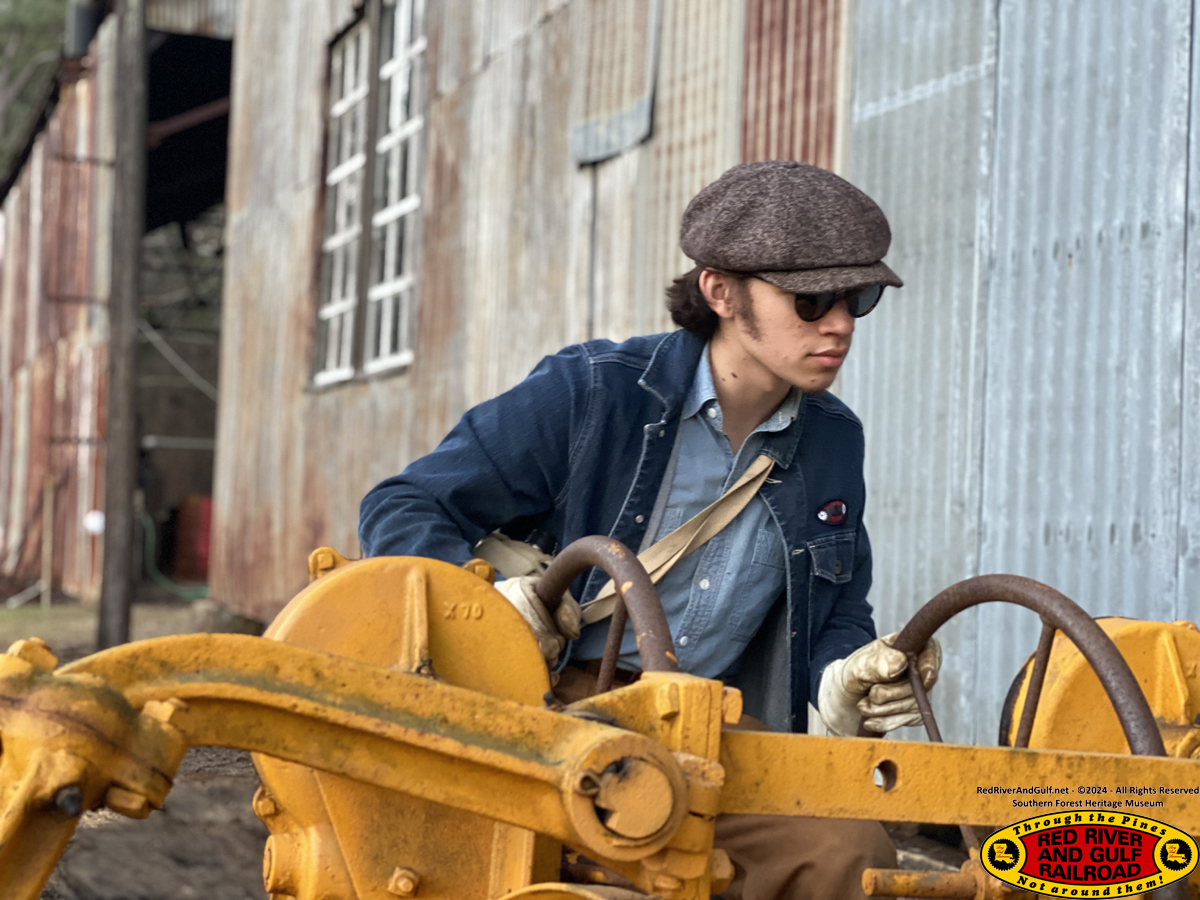
|
